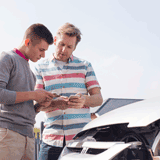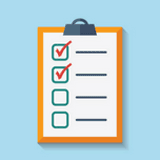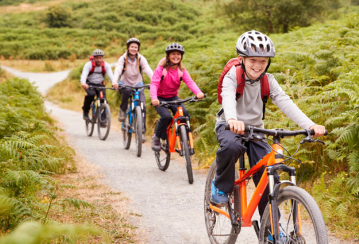News and Updates
Safe cycling and protecting your ride
People of all ages enjoy cycling. It's a great way to get around, save money on gas, and get some exercise. Perhaps you plan to cycle to school or the office while the weather's still nice this fall? Whether you're new to cycling or an experienced cyclist, we've created this guide of tips and techniques to help make you a safe, confident rider.
Protect your head
The number one cycling safety rule is to wear a helmet every time you ride a bicycle. A helmet can significantly reduce the risk of injury or death if you experience a fall or collision. Your helmet should fit properly, be worn correctly, and meet strict safety standards1. The 2-4-1 Helmet Salute is an easy way to ensure your helmet fits properly2:
-
Two fingers should fit between your eyebrows and the bottom of the helmet.
-
Four fingers should meet in a "V" shape for the straps around each of your ears.
-
One finger should fit between your chin and the chin strap.
-
Your helmet shouldn't shift around more than two centimetres in any direction.
Ride the right size bicycle
A too-big bicycle can't be adequately controlled and can be dangerous. Ensure yours is the right size by testing the following2:
-
Frame height and length – Both of your feet should be flat on the ground when straddling the top tube of your bicycle. There should be some space between your crotch and the top tube, and you should be able to reach the handlebars with a gentle lean.
-
Seat height – You should be able to touch the ground with both feet when sitting on the bicycle seat.
-
Brake levers – If your bicycle has handbrakes, adjust the levers so you can reach them and pull them firmly.
Ensure your bicycle is legal
Equipment required by law includes1:
-
A helmet – cyclists under the age of 18 must wear a helmet. Helmets are strongly recommended for cyclists over 18.
-
A bell or horn.
-
Lights and reflectors – mount a white light on the front of your bicycle and a red light or reflector on the back at night.
-
Reflective tape – attach white reflective tape on the front forks and red reflective tape on the rear forks.
Check your bicycle before you ride
The ABC Quick Check is an easy way to remember what parts of your bicycle should be inspected to keep it in good condition2.
-
A is for Air – check to see if your tires have enough air and aren't worn, cracked, or gouged.
-
B is for Brakes and Bars – check to see if your brakes work properly by standing beside your bicycle and pulling each brake individually. Check your brake pads for wear and tear. Check if your handlebars are loose from side to side or up and down.
-
C is for Chain and Crank – check your gears to see if the chain is on, lubricated, not damaged, and the pedals spin freely backwards. Test your crank by running it through the gears – ensure you can shift gears easily.
Learn the rules of the road
Bicycles are fun to ride, but they’re not toys; they’re vehicles! As a cyclist, you must follow the same rules and laws as drivers. If you’re cycling and cause a collision, you could be considered at fault. Many cyclists have driver’s licenses and, therefore, have auto insurance. All auto insurance policies are required by Ontario law to have Statutory Accident Benefits Coverage, which takes effect regardless of whether you’re on two wheels or four at the time of a collision. So, you’re covered as either a cyclist or a pedestrian hit by a vehicle.
Undoubtedly, some cyclists don’t have driver’s licenses and, therefore, don’t have auto insurance. However, if you have tenant or home insurance, the liability portion of your policy may cover injuries or damage sustained in a collision. It’s important to note that your tenant or home insurance can’t be used to cover your injuries or damage to your bicycle; it specifically covers damage or injury caused to someone else.
Suppose a driver strikes you while you’re cycling and they flee the scene or are driving without auto insurance; you could apply to the Motor Vehicle Accident Claims Fund. You can apply for compensation if you were injured or have property damage worth over $100, but the Fund doesn’t compensate for vehicle damage.
Insure your bicycle
In the unfortunate event of damage or theft, it may be a good idea to insure your bicycle. Bicycles can be insured under your home insurance policy. However, if your bicycle is worth more than the personal property limit outlined in your policy, consider additional optional coverage.
If you're a current OTIP policyholder, contact us at 1-833-494-0089 to review your existing home insurance policy. If you're not insured with OTIP and are shopping for home insurance, call us at 1-833-615-9326 to get a quote and receive a $20 gift card of your choice! When you get a quote before October 31st, you will also be entered into a draw for a chance to win a $1,000 gift card from Mark's.







